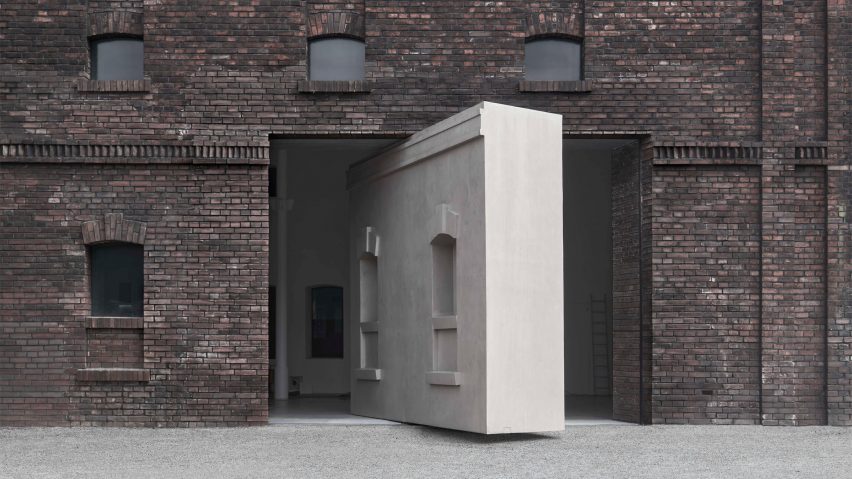
KWK Promes transforms slaughterhouse into art gallery with rotating walls
Architecture studio KWK Promes has converted a slaughterhouse in the Czech Republic into Plato Contemporary Art Gallery, with exhibition spaces lined with rotating concrete walls.
Located in Ostrava, the original heritage-protected slaughterhouse building dates back to the 19th century, but after decades of disuse, it had become dilapidated and partially collapsed.
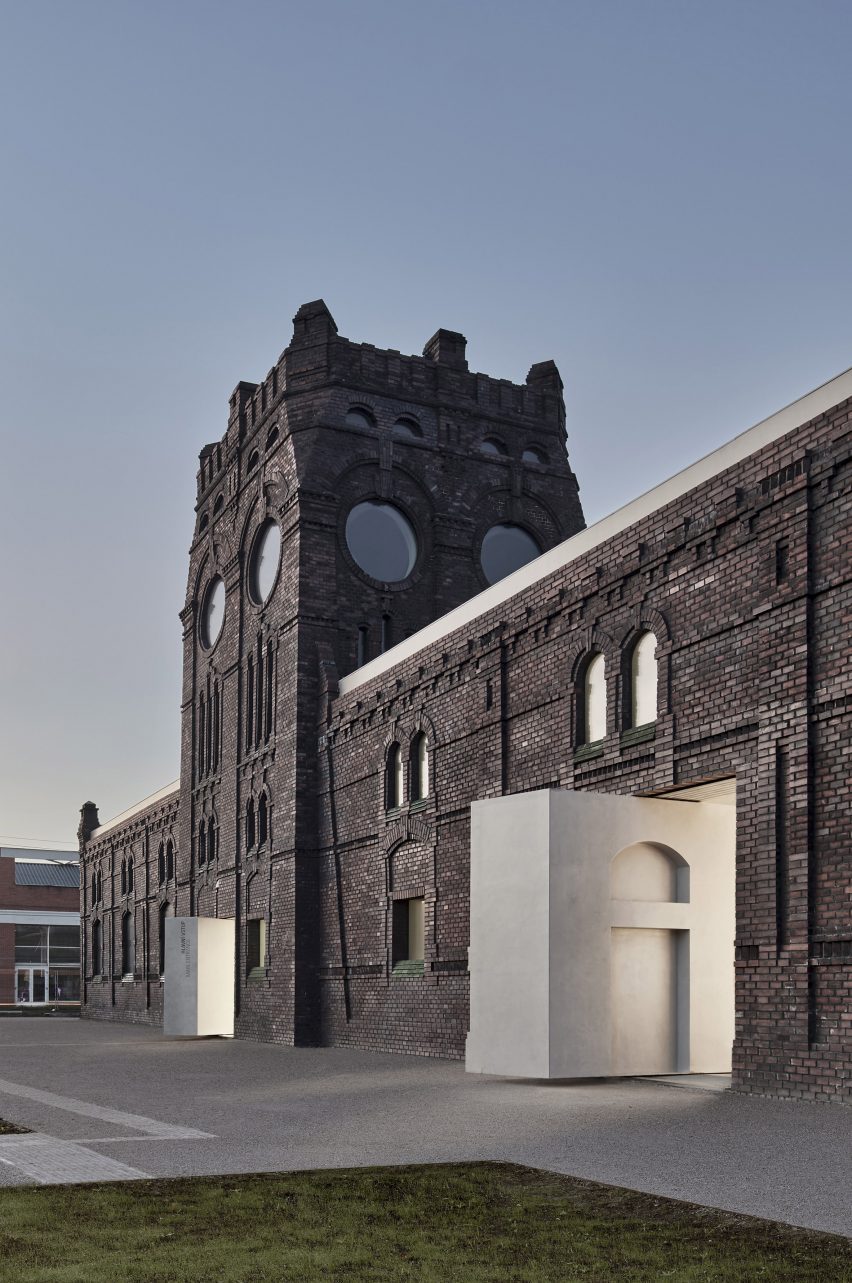
Tasked with adapting the structure into an art gallery, KWK Promes added an extension and concrete infills that contrast the existing sooty brickwork but mimic its ornamentation.
These additions include six large rotating walls, three of which provide entry to Plato Contemporary Art Gallery and three that allow its exhibition spaces to be opened to the surroundings.
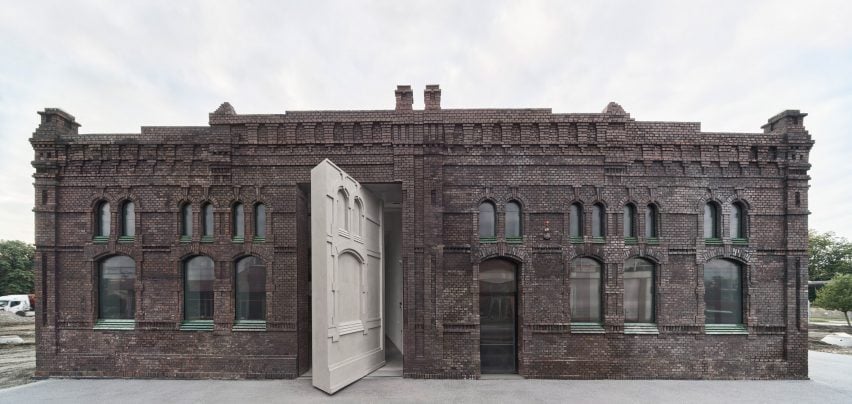
"We introduced a solution that makes art more democratic," explained the studio.
"The main idea of the project is based on preserving the functionality of the openings as shortcuts connecting the building to the city," it added. "This has provided artists and curators with entirely new exhibition possibilities and allows art to literally 'go out' into the space around the building."
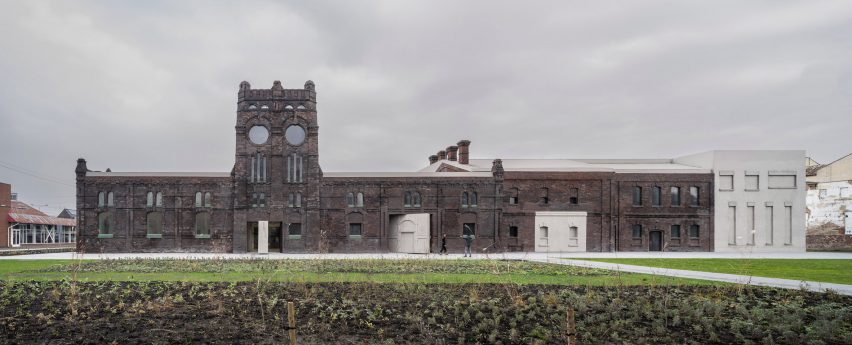
Plato Contemporary Art Gallery's rotating walls create two entrances on either side of the building, leading into a central reception, ticket office and cafe area.
The four exhibition halls each sit on the ground floor around the edges of the building, allowing them to benefit from natural light and a connection to the surrounding park.
The new wing at the building's southern end replaces a section of the original slaughterhouse that collapsed during the renovation but was needed by the gallery to meet its spatial requirements.
Inside, it contains an additional exhibition hall with offices above, finished externally with a blind concrete facade decorated with the impressions of windows, sills and lintels to echo the rotating doors.
On the first floor, this wing connects to a small group of rooms for visiting guests and a space for the gallery's educational programme.
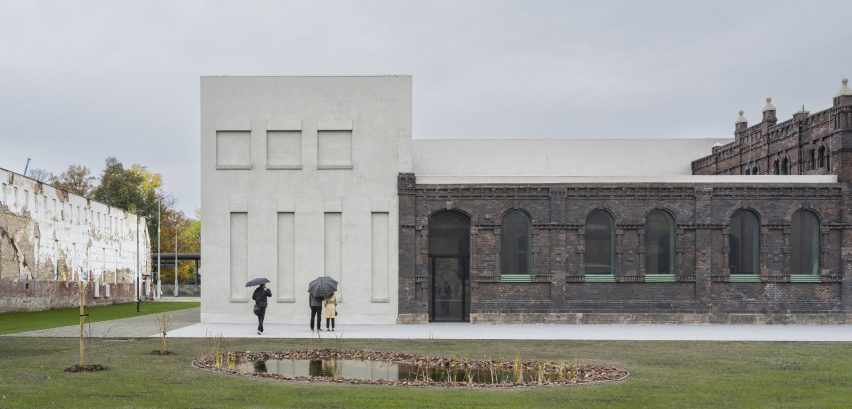
"Following extensive discussions, we made the decision to rebuild using new materials, mirroring the approach we took with the rotating gates," the studio told Dezeen.
"Our objective was to preserve the conceptual coherence of the entire project, clearly delineating between historical elements and contemporary interventions."
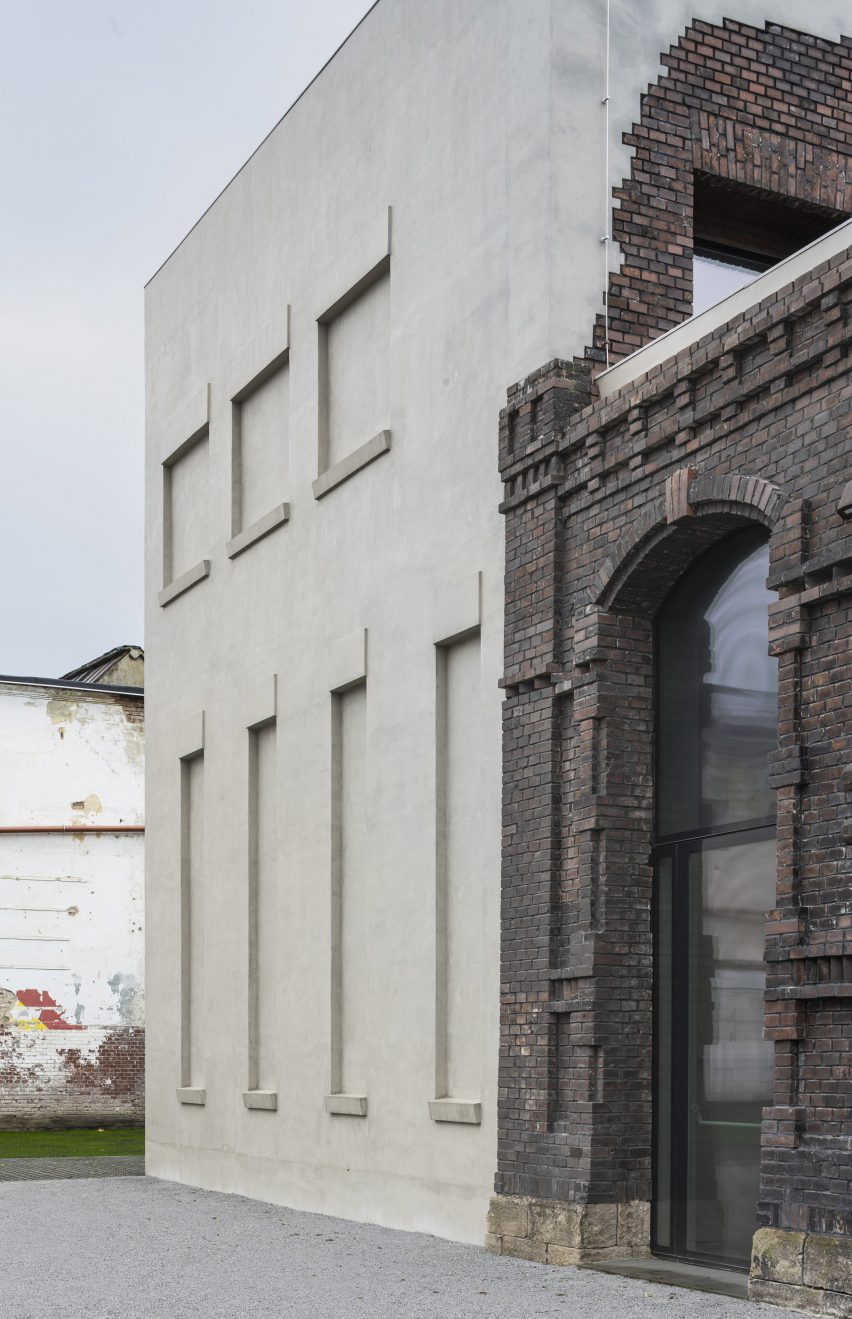
While the original brickwork has been left visible internally in the circulation areas, the galleries have been reinsulated and lined with lime plaster, with deep reveals created for the building's numerous small arched windows.
"The deteriorated bricks have been mostly replenished with those recovered from a collapsed section of the building, [and] the new glazing has a ceramic screen print, making it appear dark and dull, attenuating the light in the galleries," said KWK Promes.
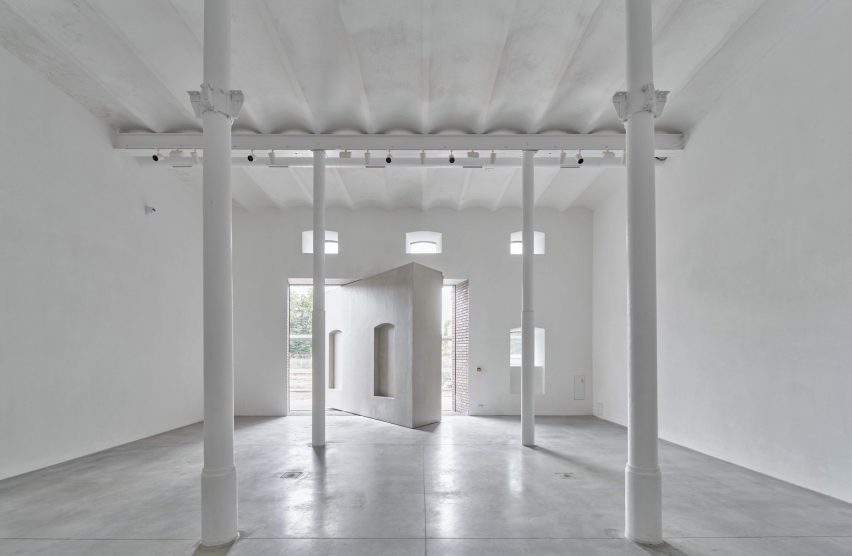
Surrounding Plato Contemporary Art Gallery, KWK Promes landscaped a park with trees, flower meadows and a small pool of water, with a gravel terrace around the gallery connecting to a series of paths.
"Initially, we imagined a paved surface for artistic activities, but as we got to know Ostrava better, we realised that the place was more in need of attractive green space for residents," explained the studio.
"The contaminated soil there has been rehabilitated and replaced by a biodiverse park with water-permeable floors, flower meadows and with retention basins."
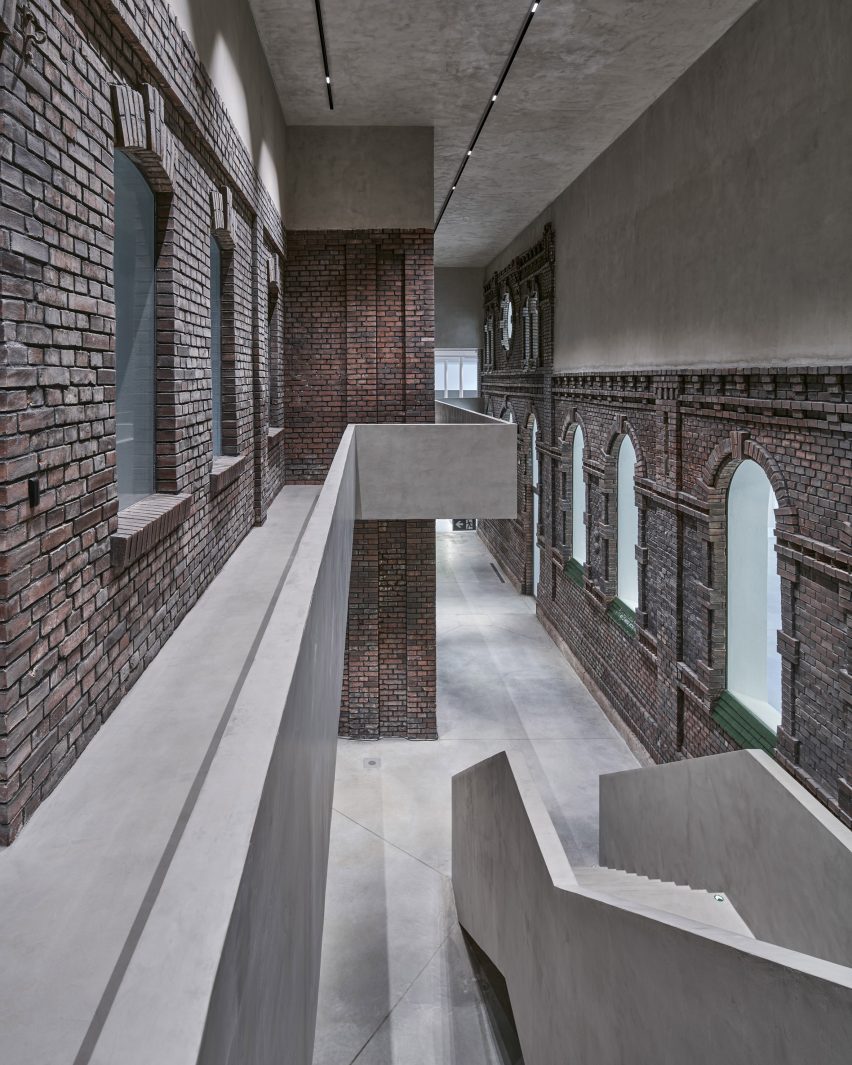
KWK Promes is a Polish architecture studio founded in Katowice in 1999 by Robert Konieczny and Marlena Wolnik. Its other recent projects include the white-concrete House on the Road and Quadrant House, which features a rotating living space.
Plato Contemporary Art Gallery was recently named one of seven finalists in this year's Mies van der Rohe Award for Europe's best new building.